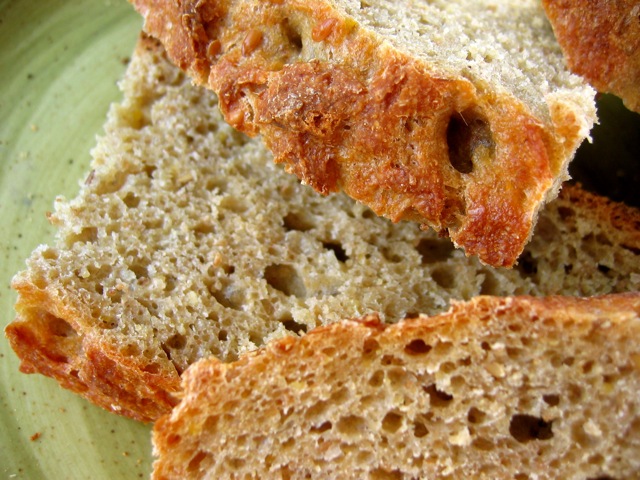
feed-image, l
Top | The Whole-Grain Challenge
(post, Caroline Cummins)
Since I was on the road for the first half of June, I kind of figured I'd take a pass on the Whole-Grain Challenge. But two weeks of bland, refined flours and grains (in pasta, bread, and rice) made me realize that I did kind of like my whole wheat. At the end of the third week of June, however — my first week back in my own kitchen — I trolled through Carrie's posts one more time and sighed. I do occasionally cook real whole grains, such as brown rice, quinoa, and even millet. (I don't find millet as hard to cook as everybody seems to think, and it's a nice alternative to ordinary couscous.) But most of what passes for "whole grains" in my household is actually "flour made from whole grains." [%image feed-image float=right width=350 caption="Hippie bread."] So far this week, we've downed a batch of Carrie's whole-grain pancakes, a package of whole-wheat spaghetti doused with puttanesca sauce, and two loaves of No-Knead Bread tricked out with whole-wheat pastry flour, barley flour, and flaxseeds. Apart from those flaxseeds, however, pretty much everything virtuous on this list got that way thanks to flour, not whole grains. In other words, pulverized grains, not the real deal. Even the granola we occasionally eat for breakfast has rolled oats, not oat groats. In my defense, I claim that the hippie flours are still healthier than the bleached, ultra-refined flours. And we do eat these flours pretty regularly, not just during The Month of Whole Grains. Still, I was bummed (like Kim) to realize that lentil salad isn't listed in the whole-grain dictionary. Best discovery of the week: Whole-wheat pasta made by the Italian company Bionaturae ain't bad — especially compared to the mushy dreck that first hit the market a few years back.

feed-image, l

reference-image, l